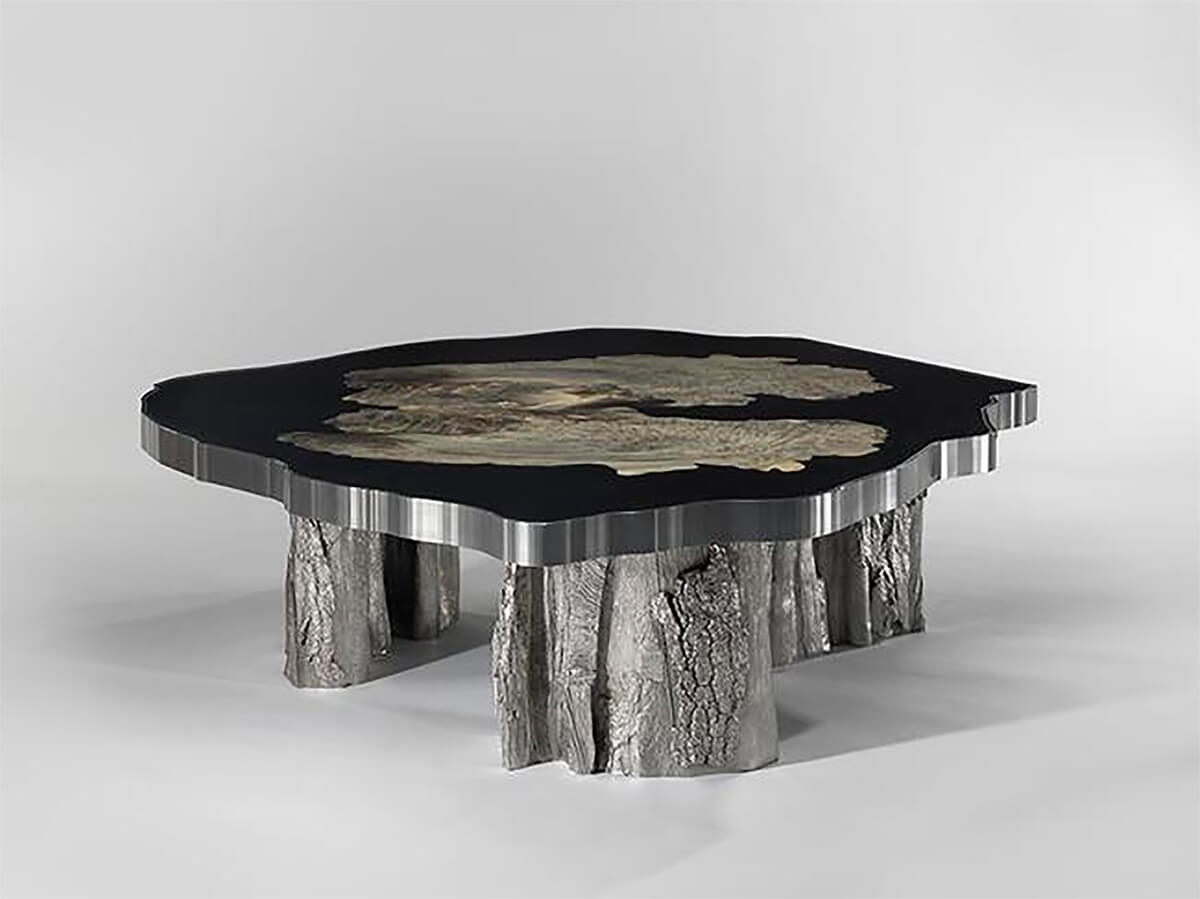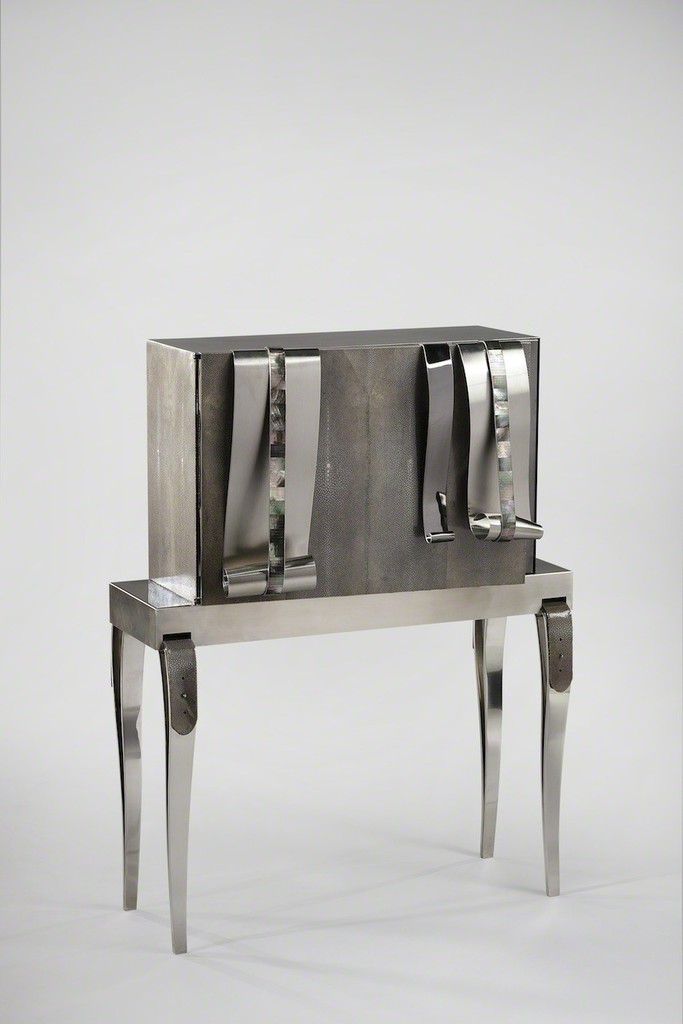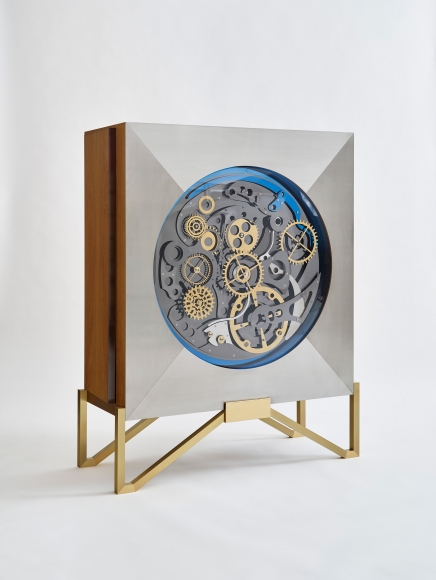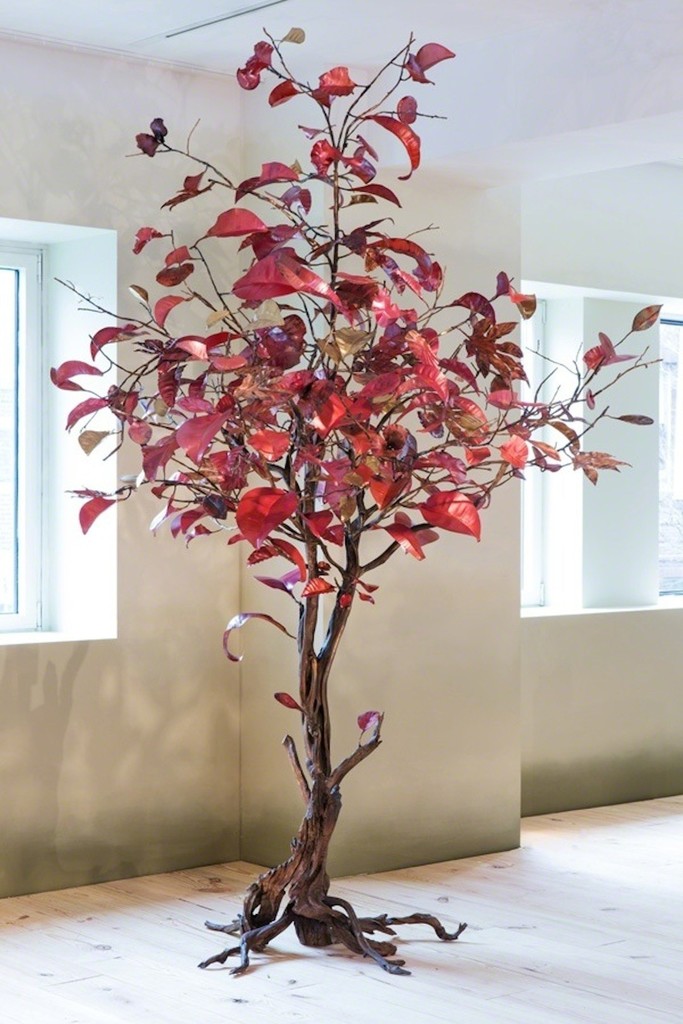Cabinets of curiosities, or ‘Wunderkammer,’ Cabinets of Wonder, were those rooms filled with encyclopedic collections of objects of natural history, geology, antiques, and archaeology, developed in Renaissance Europe, when they came to symbolize their patrons’ control over the world, through owning its microscopic reproduction. Those rooms came to stimulate creative thoughts among Renaissance men. This is exactly what Moldavia-born French designer Maria Pergay (b. 1930) sought to create in the new solo show ‘Maria Pergay: Wonder Room,’ opened at Demisch Danant Gallery last week, celebrating her 86th birthday. The objects, cabinets, clock, dining table, coffee tables, all demonstrate Pergay’s interest in exotic material, natural specimens, minerals, and the same fantasy, presented in the Wunderkammer during the Renaissance and the Baroque. In fact, the objects which Pergay created for this exhibition are so complex and multifaceted, carrying layers of materials and meanings, where their narratives are as engaging as their easthetics and physicality. I particularly loved the Table Galet, a large coffee table of plexiglas base and staineless steel top, where precious stones, minerals, fossilized ammonites, and rare river stones embedded to mimic flowing water; I also loved the Table Marie Antoinette, a sleek dining table in stainless steel and Plexiglas, where a slice of the Queen’s historic oak tree, originally planted at Versailles in the 17th century, and broke down a couple of years ago, is inserted in the metal top. These new creations by Pergay are shown along with vintage objects that come to traced the designer’s long career. Above: Table Marronnier, 2015. All images @Demisch Danant






